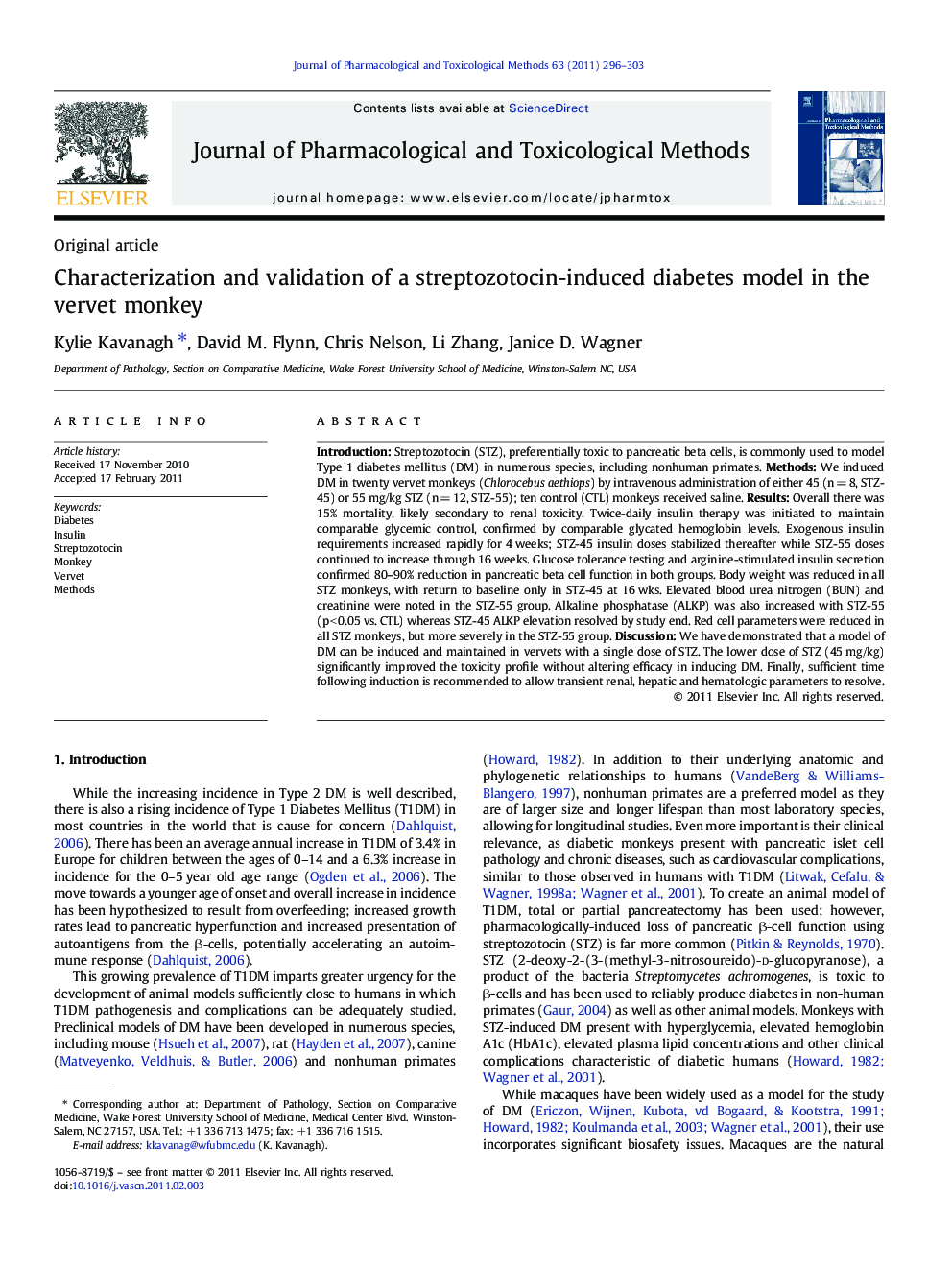| Article ID | Journal | Published Year | Pages | File Type |
|---|---|---|---|---|
| 2549387 | Journal of Pharmacological and Toxicological Methods | 2011 | 8 Pages |
Introduction: Streptozotocin (STZ), preferentially toxic to pancreatic beta cells, is commonly used to model Type 1 diabetes mellitus (DM) in numerous species, including nonhuman primates. Methods: We induced DM in twenty vervet monkeys (Chlorocebus aethiops) by intravenous administration of either 45 (n = 8, STZ-45) or 55 mg/kg STZ (n = 12, STZ-55); ten control (CTL) monkeys received saline. Results: Overall there was 15% mortality, likely secondary to renal toxicity. Twice-daily insulin therapy was initiated to maintain comparable glycemic control, confirmed by comparable glycated hemoglobin levels. Exogenous insulin requirements increased rapidly for 4 weeks; STZ-45 insulin doses stabilized thereafter while STZ-55 doses continued to increase through 16 weeks. Glucose tolerance testing and arginine-stimulated insulin secretion confirmed 80–90% reduction in pancreatic beta cell function in both groups. Body weight was reduced in all STZ monkeys, with return to baseline only in STZ-45 at 16 wks. Elevated blood urea nitrogen (BUN) and creatinine were noted in the STZ-55 group. Alkaline phosphatase (ALKP) was also increased with STZ-55 (p < 0.05 vs. CTL) whereas STZ-45 ALKP elevation resolved by study end. Red cell parameters were reduced in all STZ monkeys, but more severely in the STZ-55 group. Discussion: We have demonstrated that a model of DM can be induced and maintained in vervets with a single dose of STZ. The lower dose of STZ (45 mg/kg) significantly improved the toxicity profile without altering efficacy in inducing DM. Finally, sufficient time following induction is recommended to allow transient renal, hepatic and hematologic parameters to resolve.
